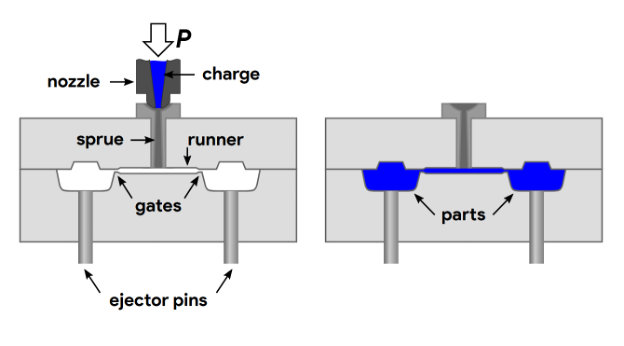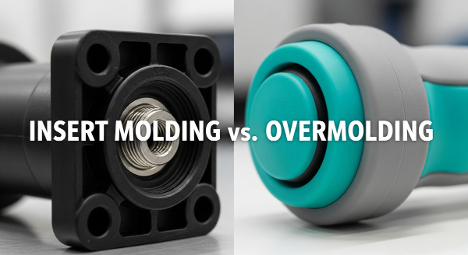Manufacturing process play a crucial role in shaping the products we use every day. Among the various techniques available, blow molding and injection molding are two widely used methods for creating plastic products. Understanding the differences between these processes is essential for manufacturers looking to choose the most suitable method for their specific applications.
Blow Molding
Key Characteristics of Blow Molding
- Hollow Structures: Blow molding is specifically designed for creating hollow objects. This makes it an ideal choice for products like bottles and containers.
- Variety of Materials: Blow molding supports a range of plastic materials, including polyethylene, polypropylene, and PET(polythylene terephthalate).
- Cost-Effective for Large Production Runs: It is particularly cost-effective for large production runs, making it suitable for industries requiring high-volume manufacturing.

Injection Molding
Injection Molding is a versatile manufacturing process used to create a wide array of plastic parts and products. The process involves melting plastic pellets and injecting the molten material into a mold. Once the material cools and solidifies, the mold is opened, and the finished product is ejected.
Key Characteristics of Injection Molding
- Versatility in Product Design: Injection molding allows for intricate and complex designs. This makes it suitable for creating a broad range of products, from small components to large automotive parts.
- Wide Range of Materials: Like blow molding, injection molding supports various materials, including thermoplastics and thermosetting polymers.
- Precision and Consistency: Injection molding offers high precision and consistency in product dimensions. This makes it a preferred choice for industries where tight tolerances are crucial.

Comparison
- Product Complexity: While both processes can create a variety of products, injection molding is generally more versatile and better suited for complex shapes and intricate designs.
- Tooling Costs: Injection molding typically has higher upfront tooling costs compared to below molding. However, for large production runs, the per-unit cost is often lower with injection molding.
- Production Speed: Blow molding is often faster than injection molding for certain applications, especially those involving large hollow parts. However, injection molding can be more efficient for smaller, intricate parts.
- Material Selection: Both processes support a wide range of materials, but the specific material requirements of a project may influence the choice between the two methods.
The Similarities Between Blow Molding and Injection Molding
- Plastic Molding Techniques: Both blow molding and injection molding fall under the umbrella of plastic molding techniques. They are widely employed in the plastics industry to create a variety of products for different applications.
- Materials Selection:Both processes support a wide range of plastic materials. Common materials used in both blow molding and injection molding include polyethylene, polypropylene, polyvinyl chloride(PVC), and various other thermoplastics.
- Mold Design: The fundamental concept of using a mold to shape plastic material is central to both processes. In both blow molding and injection molding, molds are crucial for determining the final shape and characteristics of the manufactured products.
- Heating and Melting: Both processes involve the heating and melting of plastic materials. In injection molding, plastic pellets are melted before being injected into a mold, while in blow molding, plastic is heated and then blown into a mold to take its shape.
- End-Product Variety: While each process has its specialties, both blow molding and injection molding are capable of producing a wide variety of plastic products. From bottles and containers to automotive components, the versatility of these processes allows for diverse end-products.
- Quality Control: Both blow molding and injection molding require strict quality control measures to ensure that the final products meet the desired specifications. Quality checks are performed at various stages of the manufacturing process to maintain consistency and meet industry standards.
- Post-Processing Operations:After the initial molding process, products from both techniques may undergo additional post-processing operations such as trimming, assembly, or surface finishing to achieve the final desired form.
- Industrial Application:Both blow molding and injection molding find applications in a range of industries, including packaging, automotive, consumer goods, and more. The choice between the two methods often depends on the specific requirements of the end products.
Conclusion
In choosing between blow molding and injection molding, manufacturers must carefully consider the specific requirements of their products, production volumes, and budget constraints. Each method has its strengths and weaknesses, making them suitable for different applications. Whether it's the cost-effectiveness of blow molding for high-volume production or the versatility of injection molding for complex designs, understanding these differences is essential for making informed decisions in the world of plastic manufacturing.
-q4gvl4k29y4hq8j9rjpapvj0ft06fje63olt7p210i.png)


